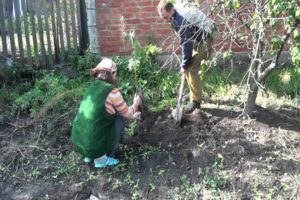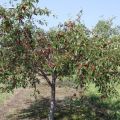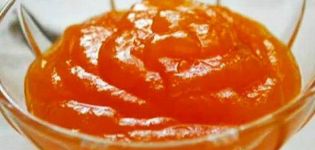How to properly grow cherries from a stone at home and rules for caring for seedlings
Cherry is a culture that is one of the first to give its sweet juicy fruits, rich in vitamins. The easiest way to grow a lush tree in the garden is to purchase a ready-made seedling or vaccinate. Many gardeners, especially beginners, are interested in how to grow cherries from a stone at home, how such an experiment will end, whether it will be possible to wait for a good harvest.
Advantages and disadvantages of pitted cherries
When growing a tree at home using a stone, you do not need to build illusions and expect that it will be possible to get varietal cherries - in 99% of the maternal characteristics are not preserved. The grown plant will bear small, tasteless fruits.
It is not necessary to abandon an exciting experiment, having learned this significant drawback - the tree has many advantages:
- perfectly tolerates even harsh climatic conditions;
- It does not require special care;
- practically not affected by diseases, pests;
- not afraid of severe frosts;
- has increased immunity.
Another indisputable advantage of cherries grown from a stone is that the tree serves as an excellent stock.
Seed selection
Usually seed germination is quite high, sprouts give even small seeds. Despite this, it is recommended for cultivation to use planting material for large fruits, a little overripe, with excellent taste.
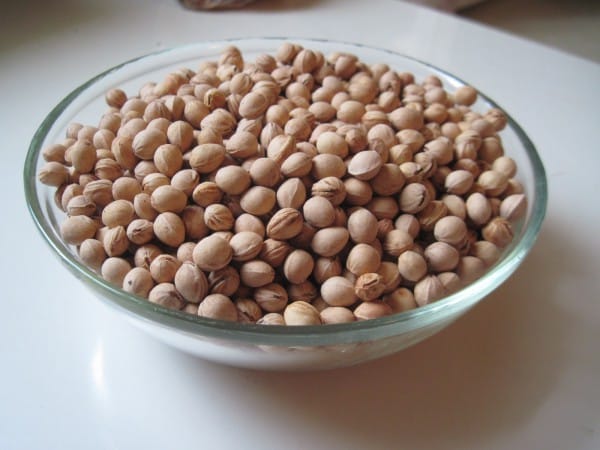
It is not recommended to use planting material from purchased fruits - most likely, berries were brought from warm regions, therefore, in harsh conditions, the seedling will certainly die.
You should also not take seeds from a volunteer - the tree will be susceptible to rot, fungal diseases.
When planting, use fresh seeds that have good germination. Storage will certainly affect the appearance of shoots - after a year the chances of getting full shoots are significantly reduced.
Bone stratification
After removing the seeds, it is recommended to rinse them thoroughly, dry them a little at room conditions. You can plant in pots right away, but it is better to start planting in the spring, after having subjected the seeds to stratification.

Hardening the seeds is easy:
- Put in a small container, sprinkle the bones with sawdust, peat.
- Moisten a little.
- Put on the balcony in the refrigerator.
Regularly check the quality of the planting material - remove spoiled, moldy seeds in a timely manner.
Landing dates
Planting seeds depends largely on the region. In the southern regions, it is better to give preference to autumn planting - in the spring the first shoots will appear, and the planting material will receive full hardening in artificial conditions, which will affect endurance.

In harsh conditions, it is better to plant seeds in spring - an autumn planting will lead to the emergence of shoots too early, so a lack of light will lead to stretching of the plants. Use containers with sand, sawdust for storage. The storage period should not exceed six months, otherwise the seeds will not germinate.
Substrate preparation
It is recommended to use a ready-made substrate for germinating seeds. Purchase seedling potting mix in the store. If it is not possible to use purchased soil, prepare it yourself. Mix:
- 5 handfuls of mother soil;
- a handful of coarse clean sand;
- a handful of ash;
- 2 handfuls of peat.
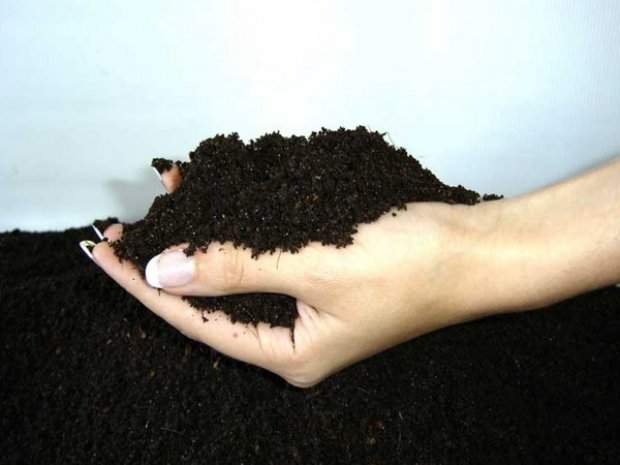
Make sure to make holes in the pot to remove excess water. Lay a drainage layer to prevent moisture stagnation. Be sure to ignite the mother soil in the oven or pour it abundantly with boiling water. This precaution will allow you to destroy harmful microorganisms, pest larvae.
Seed planting
After keeping the seeds in wet sand or sawdust, sprouts appear - this is a signal for planting. As with growing plants in the open field, deepen the cherry planting material by only 1-2 cm. Be sure to carefully water the soil mixture, trying not to wash the seeds. If a common container is used for growing plants, leave a distance of about 10-12 cm between the drupes. In case of poor-quality planting material, a smaller gap is allowed - it is better to thin out later.
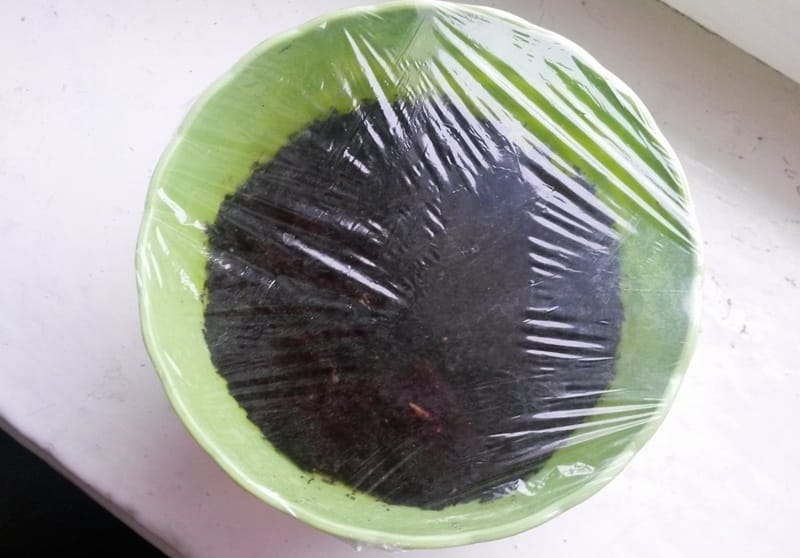
How to properly care for seedlings
Cherries grown from drupe do not differ in any way from ordinary domestic plants, so there will be no particular difficulties - the plants are unpretentious in care and do not require special attention. The main thing is to avoid mistakes in germination, to water in a timely manner, careful loosening, and timely introduction of nutrients. In order for the plant to actively grow and develop, it is recommended to send containers or pots outside during a warm season.
Be sure to monitor the weather - in case of cold snaps, it is better to bring the container with young trees into the room.
Trees grown for planting in open ground are recommended to be kept at home for up to three years. It is imperative to provide a comfortable wintering - about 12 degrees. Send to a cool place immediately after dropping the leaves, first inspect the condition of the bark, branches - if wintering sites of pests are found (under the bark, in the ground), remove insects, and carry out treatment for prevention.
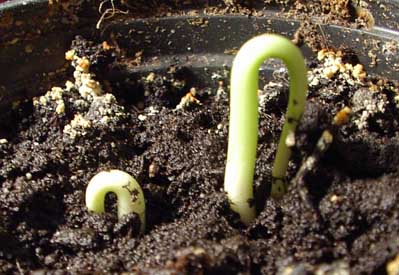
Regularity of watering
Special rules for watering cherries no - irrigate the substrate as needed. To do this, regularly check the surface of the soil with your finger - if it is dry to a depth of 1 cm, carefully water the soil mixture. Inject the liquid gently, preferably under the wall of the pot. Sweet cherries, regardless of where they are grown, are afraid of waterlogging. An abundance of water will certainly provoke rotting of the root system, even drainage here may be powerless. Before watering, carefully loosen the surface of the soil mixture.
Do this carefully - most of the cherry roots are on top, they are easy to damage, which will cause the tree to become weakened or even die.
Once every few days, it is recommended to irrigate the plant with warm water over the leaves. Pre-protect the soil surface in the pot - wrap it with polyethylene. If possible, feed on the leaves several times.
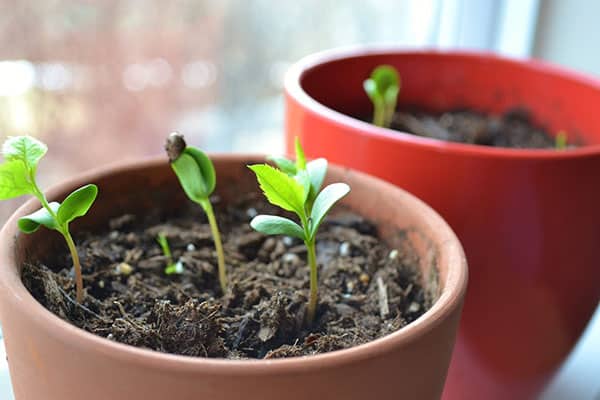
Feeding young animals
Start adding nutrients after the first full-fledged leaf appears.It is recommended to use organic compounds (mullein solution, humus), mineral fertilizers. The regularity of top dressing is once every two weeks. Pre-carry out abundant watering, light loosening of the soil surface.
It is forbidden to introduce fresh organic matter - there is a risk of provoking the development of diseases. Another danger lurking in the manure, which did not have time to perepil, - an abundance of nutrients will burn the delicate roots, they will not be protected even by generous preliminary watering.
Protection from pests and diseases
Cherries grown on the windowsill are rarely affected by pests or diseases. If the plants are grown outdoors, there is a risk of disease and insect occupation. Young trees will be protected by regular preventive treatments - the use of Bordeaux liquid, copper sulfate solution.

Often, sweet cherries, which are taken out into the street in a pot, are affected by aphids. To use against insects that suck juice from young shoots, it is recommended to use proven folk methods. The easiest option is to sprinkle aphids with wood ash daily or treat with an infusion of this valuable product. If there are too many insects, use more aggressive agents - a mixture of soapy water, wood ash, red pepper. Use chemicals in extreme cases when simple formulations cannot be handled.
Regardless of what means are used - folk or purchased, the treatment should be carried out in the open air. It is forbidden to spray the tree indoors - it is easy to damage the plants that grow near the sweet cherry, or even harm people, pets.
Pruning and shaping the crown
It is recommended to prune the cherries grown from the stone in the second year of life. Usually only a part of the main trunk is removed, the distance from the surface of the soil to the line along which the cut is made is about 60 cm.This measure will stimulate the growth of lateral shoots.

During the growth of the tree, it is recommended to remove dry, damaged branches. It is not necessary to shorten them, but if the cherry has grown too much, the crown has become thick, cut out the excess shoots.
Grafting a tree
It is recommended to vaccinate 3-4 years after planting the bone. Usually, varieties grown in this region are used for grafting, they will perfectly tolerate the operation, will not cause trouble in care, will withstand harsh climatic conditions, and will delight during the fruiting period.
It is better to vaccinate with two varieties at once - mutual pollination will not require planting other trees for pollination. Plant cherries recommended in spring. It is better to prepare cuttings even in the fall; a refrigerator or cellar is suitable for storage (if there is too much scion). During the winter, carefully inspect the cuttings, remove spoiled or dried ones.
The trunk of a sweet cherry in the third year of life is usually not too thick, so it is better to inoculate using the splitting technique:
- Graft to inspect, remove part of healthy tissue - the cut should be clean, leave several healthy beautiful kidneys.
- Trim the stock, leave a part of the trunk about 15 cm.
- The operation should be carried out with clean, pre-sterilized instruments, dirt or even dust particles should not fall on the cut.
- Make a small split in the rootstock (no more than 5 cm).
- Insert prepared cuttings, fix tightly with a special tape, coat with garden varnish.
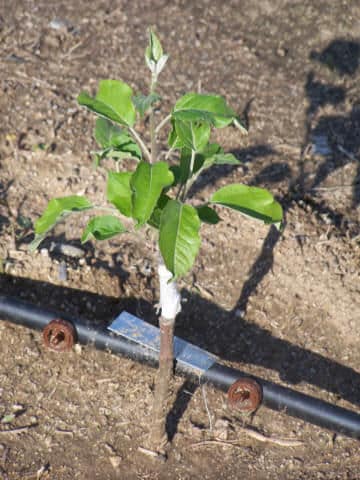
Vaccination is considered successful if young leaves appear soon. Carry out the cherries as usual, but make sure that the tape fixing the slices does not pinch the trunk.Transplant to open ground should be carried out at the end of summer (for cold regions) or in autumn (in warm regions). In order for the tree to take root well, it is recommended to take the container with the plant outside during the summer. If the weather is warm, leave it even overnight - preliminary hardening will not worry about the endurance of cherries.
The first fruits may appear next year, but you should not expect too much from young cherries - there will be little ovary. It is better to remove it and wait until the tree gets stronger. Full fruiting will come only after 2-4 years.
The beginning of fruiting trees
Usually the first cherry flowers dissolve the next year after grafting and transplanting. There are few buds, but even they can harm the tree, so experienced gardeners remove the first flowering completely. It is recommended to wait for the harvest in a few years, when the plant gets stronger, gains strength, and quickly starts to grow.
If the cherry has not been grafted, flowering occurs in 4-6 years. The fruits will not please in size and taste; such plants are usually used for landscaping. It happens that the sweet cherry, even after a comfortable winter, refuses to bear fruit. Autumn is to blame for this - too warm days do not allow the tree to fully rest. Do not get too upset - after a crop failure, a fertile year usually comes.
Growing cherries from seed is a fun, simple process. The efforts spent will certainly be rewarded, the tree will delight you with fruits, a dense, lush crown, endurance. The plant does not require special attention; simple care, watering, and regular feeding is enough. Do not forget about vaccination - this is the only way to get delicious sweet fruits that will delight adults and children.

